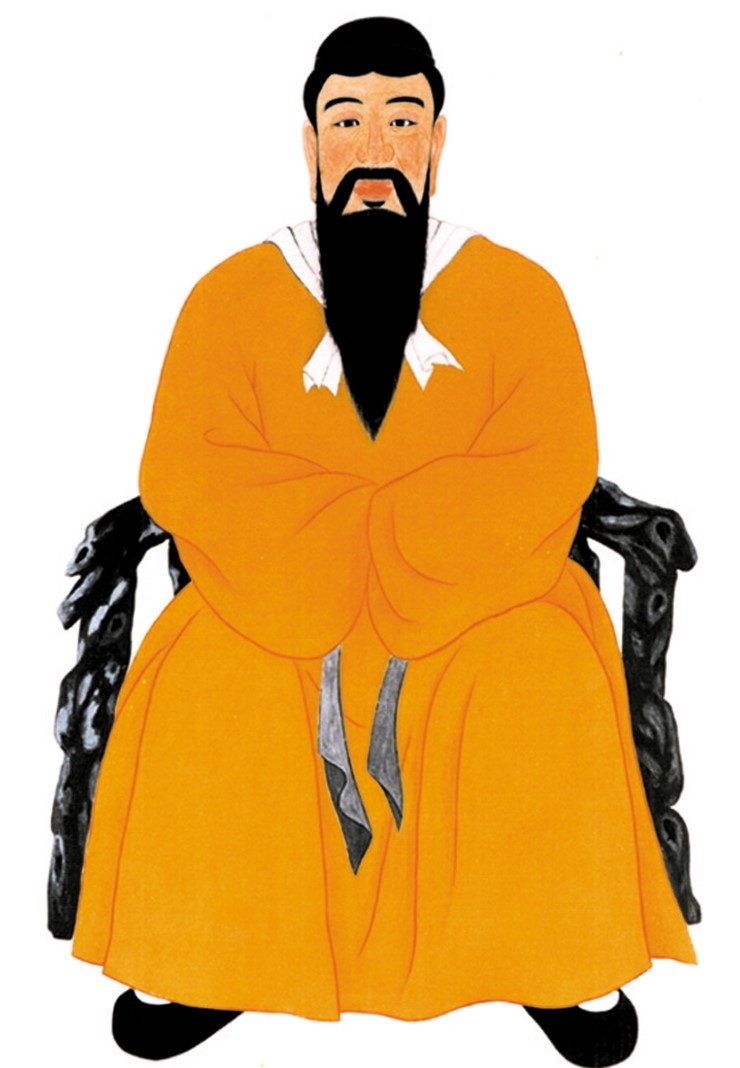Founding Myth of Go-Joseon (고조선 건국 신화)
Every civilization has their own “founding” myth story. The Romans have the tale of the she-wolf and the twin brothers – Romulus and Remus. The vikings have their story of Ask and Embla, first man and woman created by Odin.
Today I want to talk about the founding myth of Go-Joseon (고조선), the ancient civilization that existed on the Korean peninsula roughly around the early 100 BCE.
Because there is so much to talk about Go-Joseon, details about it will be saved for next time. I will focus on telling you the founding myth only. Just like other myths around the world, this origin story is very fictional but still extremely interesting.
Dangun Shin-Hwa (단군신화)
This is the story according to Sam-Guk-Yu-Sa (삼국유사 – Collection of the history of three kingdoms, Go-Goo-Ryeo (고구려), Baek-Jae (백제), and Sila (신라), around 1281 written by a buddhist monk named Il-Yeon (일연)):
Long long ago, Hwan-Oong (환웅), the son of god, looked down unto the earth and saw humans. He wanted to help them to live better lives so he asked his father for his permission and blessing to go down to earth. His father knew how much his son loved humans so he gladly granted his permission and also gave his son Chun-Boo-In (천부인 – Three divine treasures/items to represent leadership and authority; Never specifically described as three items but often interpreted and widely accepted as: bronze sword, bronze bell, and bronze mirror).
Hwan-Oong led three thousand heavenly force and descended under the sacred tree called Shin-Dan-Soo (신단수), located at the summit of Tae-Baek Mountain (태백산). He then named the place of his arrival, Shin-shi (신시 – “City of God”) and the people called him Hwan-Oong-Chun-Wang (환웅천왕 – “Hwan-Oong, the king of the sky”).
He commanded Poong-Bek (풍백 – Wind), Oo-Sah (우사 – Rain), and Oon-Sah (운사 – Cloud) and supervised 360 tasks, including agriculture, food, life span, disease, punishment, justice, good, and evil.
One day, a bear and a tiger came to Hwan-Oong saying, “I wish to transform into a human.” Hwan-Oong, after hearing their desperate pleas, gave one bundle of mugwort (very bitter herb) and twenty garlics, and said to them, “If you both eat these and do not see the sunlight for one hundred days, you will be turned into humans.”

In the darkness of the cave, the tiger grew sick and tired and ran away but the bear persevered and was transformed into a woman on the 21st day.
The she-bear was named Oong-Nyu (웅녀 – Literally meaning: bear-woman). She did not have anyone to marry so she went to Shin-Dan-Soo, the sacred tree on the top of Tae-Baek Mountain, and prayed for a spouse. Hwan-Oong, seeing this, temporarily turned into a man and married her. They had a son together and named him Dan-Gun-Wang-Gum (단군왕검, Dangun for short. Literally meaning “king of birch tree”. Dan means “birch tree” + Gun means “king/lord”).

It is said that Dangun founded the capital city of Ah-Sa-Dal (아사달 – Literally meaning “bright land”: Ah-Sa means “morning” + Dal means “land/mountain”) and established the first Korean nation which he named, Joseon (조선 – Meaning “land of the beautiful morning” or “the first place where the morning arrives.” Jo means “morning” + Seon means “to be bright, good, beautiful”).
Dangun’s founding principle of Joseon was: Hong-Ik-In-Gan (홍익인간) literally meaning, “Widely benefiting the human world” (humanitarianism).
As a side note, historians call Dangun’s Joseon “Go-Joseon” (Go means “old, ancient”). This is to avoid confusion with the new kingdom established several centuries later by the same name.
Tl;dr: Hwan-Oong, son of god, wanted to come down to earth and help mankind. He was a very good ruler and made everyone happy and prosperous. A tiger and a bear wished to become humans too. Hwan-Oong gave them bitter herb and garlic to eat for 100 days in the dark. The tiger ran way but the bear remained and eventually transformed into a woman. Oong-Nyu, the bear-woman, wanted to marry but had no partner. Hwan-Oong married her and they had a son together named Dangun, who established the first Korean nation named Joseon.
Background Information and Historical Context
From this myth, and with existing knowledge and studies, we can learn few things about the ancient Korean civilization of Joseon:
- Ethnocentrism
- God’s chosen people
- Animism and totemism as the main belief system
- Descended from a bear
- Choosing bear as the main totem
- Another theory: Unification of two rivaling tribes (bear-worshipping tribe and tiger-worshipping tribe)
- Divinity of nature
- Importance of Shin-Dan-Soo, the sacred tree. Symbolizes the “tree of life” and the connecting point between the sky (heaven) and the earth
- Agricultural society
- Emphasis on agriculture, grains, and farming techniques
- Unity of Church and State
- Political leader == Religious leader
- Some scholars argue that Dangun-Wang-Gum (full name of Dangun) is not a name of a single person, but rather two separate terms that represented the offices of a religious leader and a political king/leader.
- Dangun -> Religious/spiritual
- Wang-gum -> Political
- Value of virtue
- Patience and benevolence
- The bear persevered but the tiger did not. Moral of the story: No pain, no gain.
- Humanitarianism
- Founding principle of Joseon
- Patience and benevolence
This story of Dangun is essential because, similar to founding myths of other civilizations, it helps to develop unified national identity.
Until next time!
Cheers,
Ayeon
Sources
- Il-Yeon. Sam-Guk-Yu-Sa. 1281.
- Lee, Ji-Yeong. Myths of Korea. Sagoonja, 2003. 33 – 57 p.